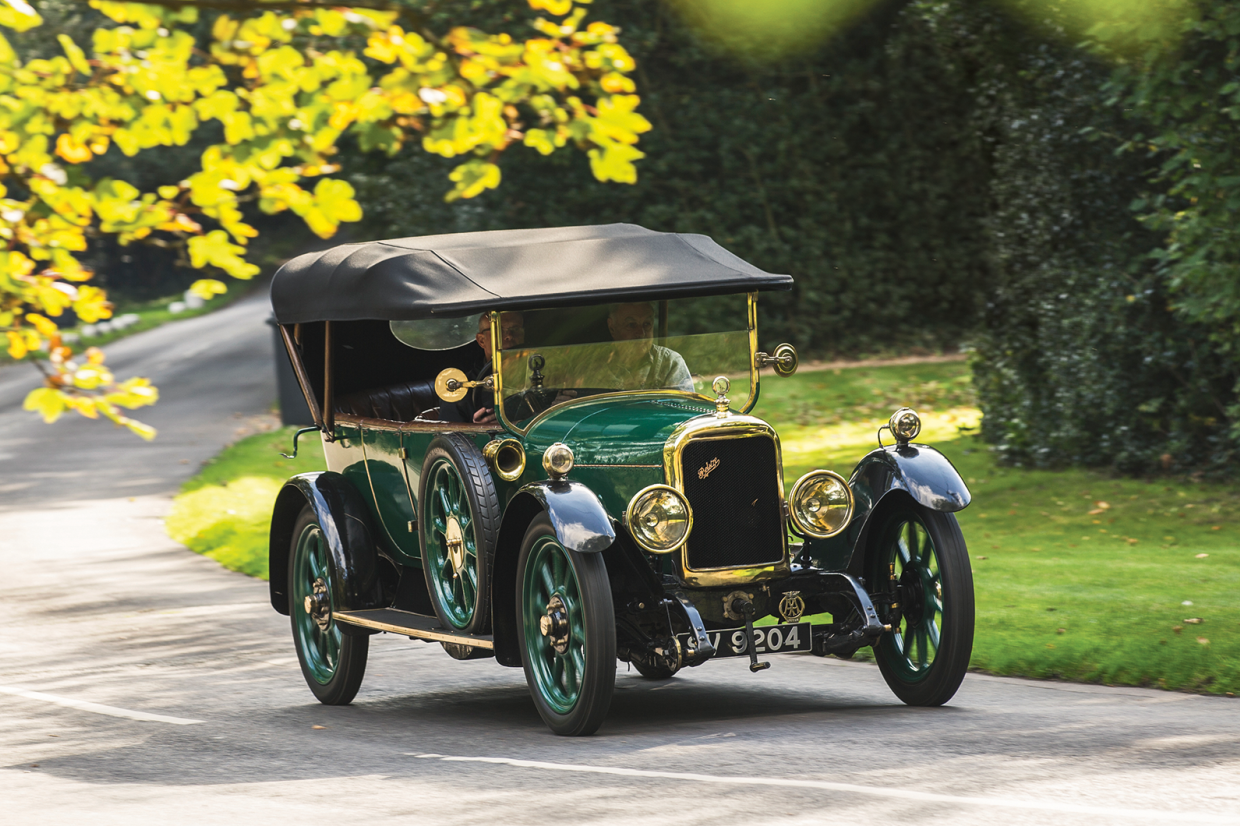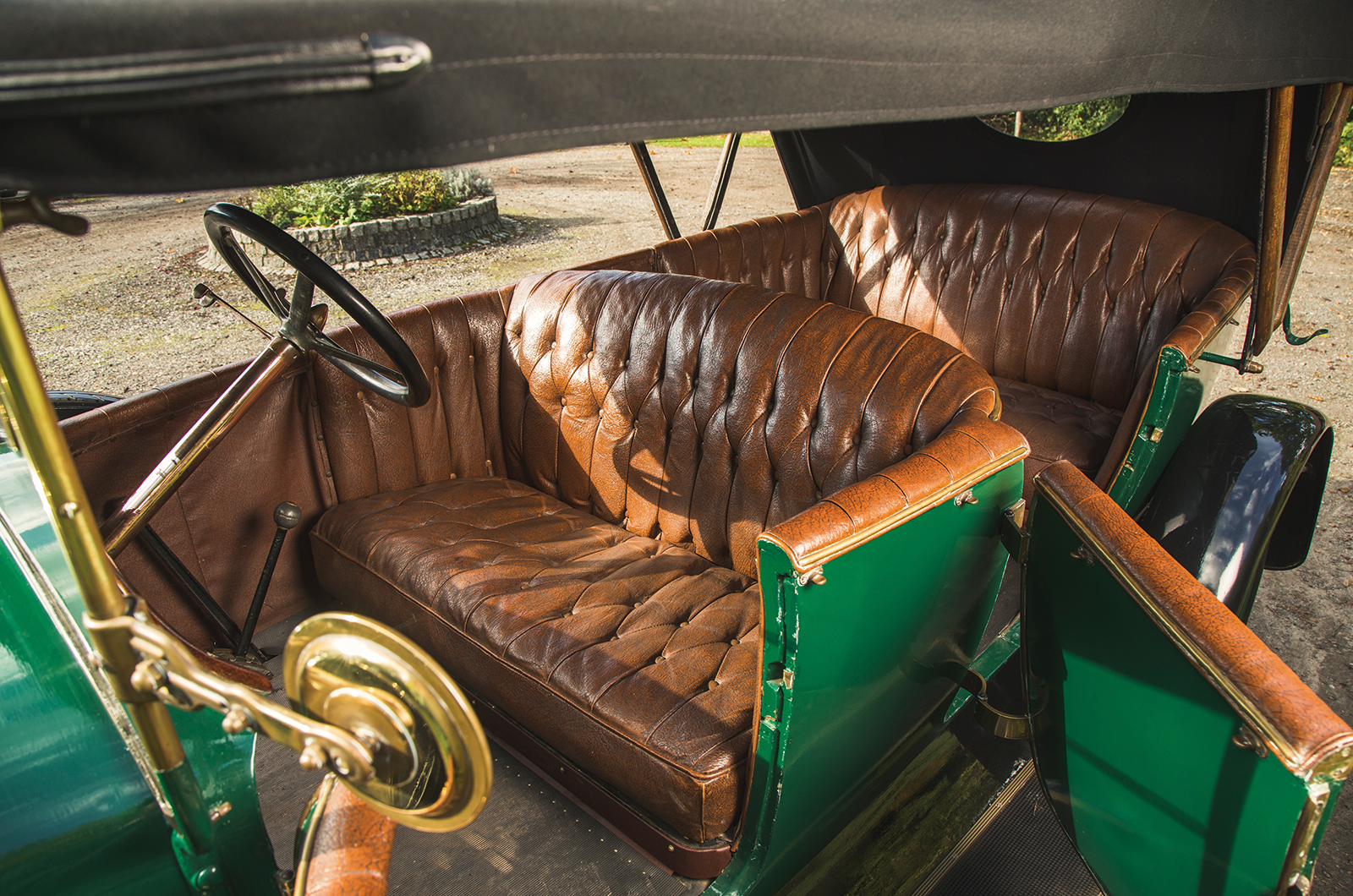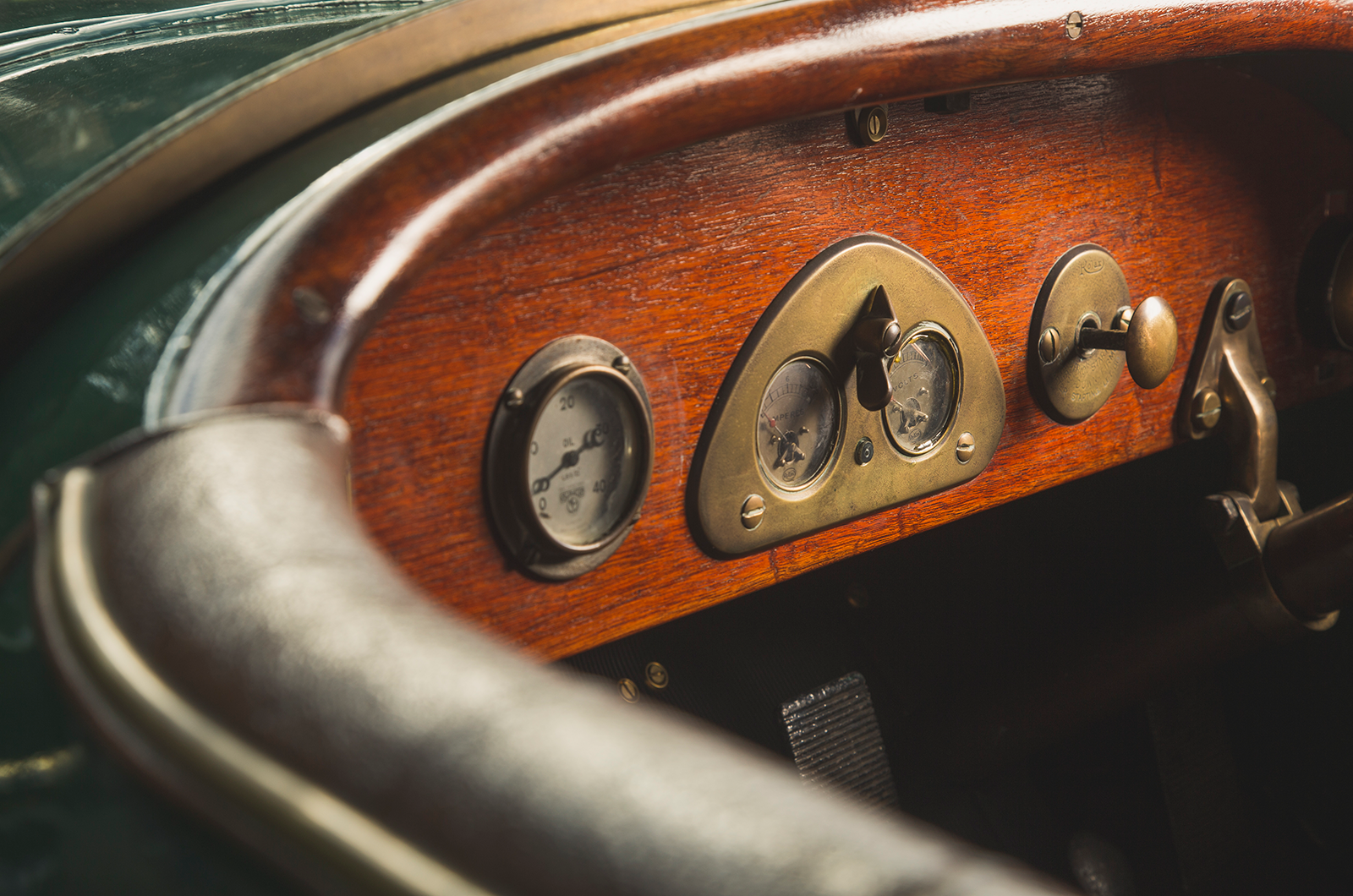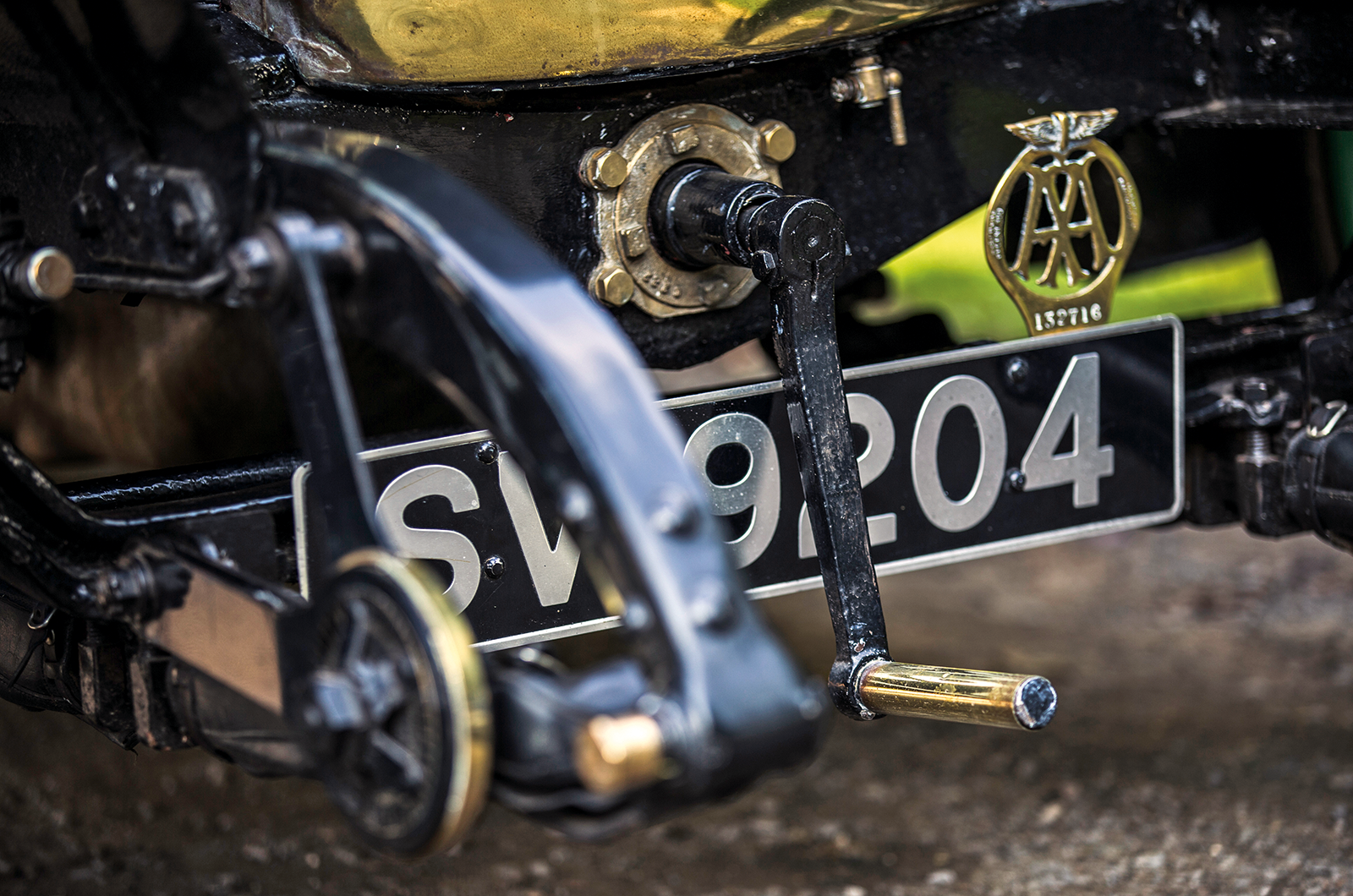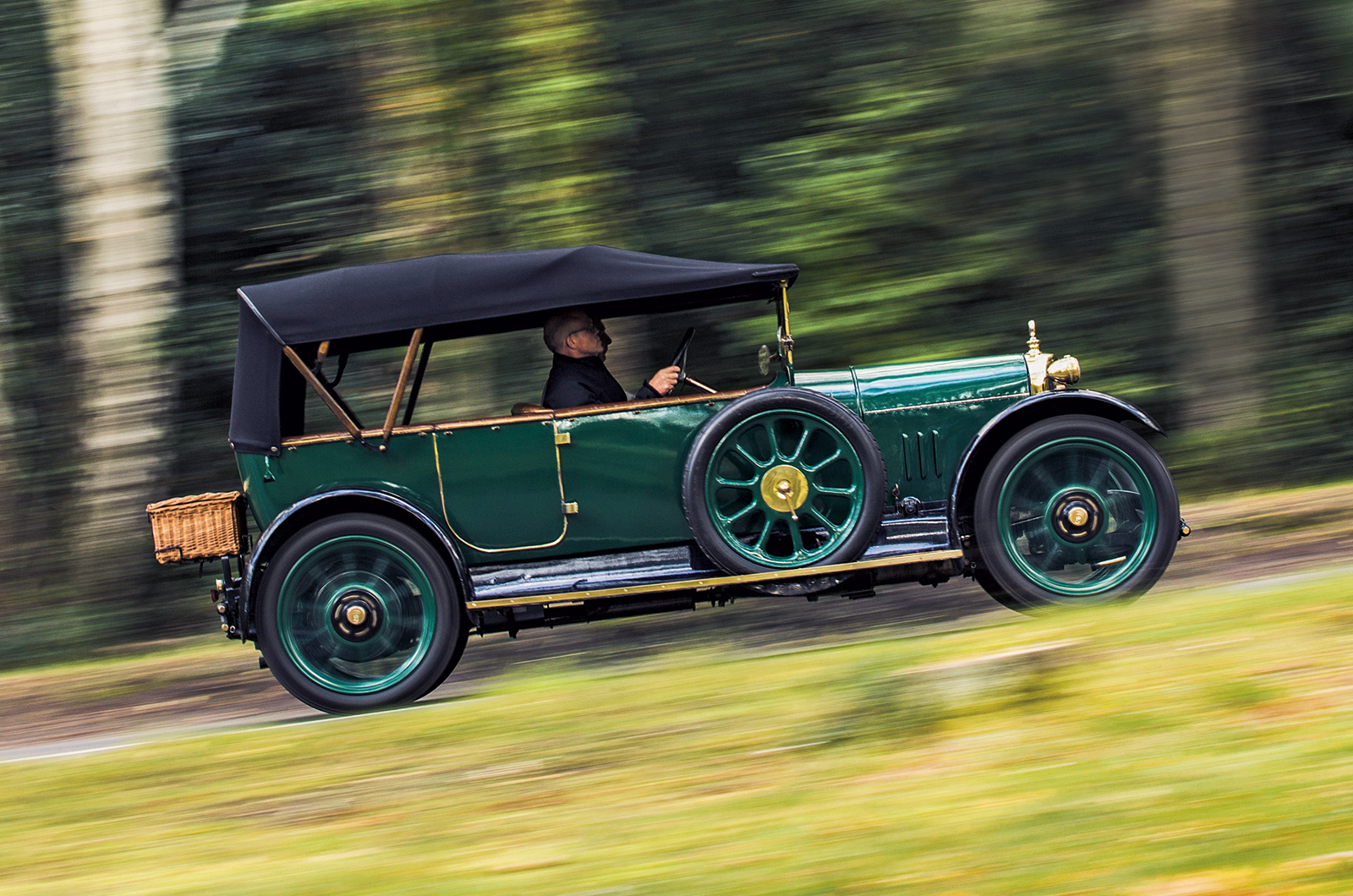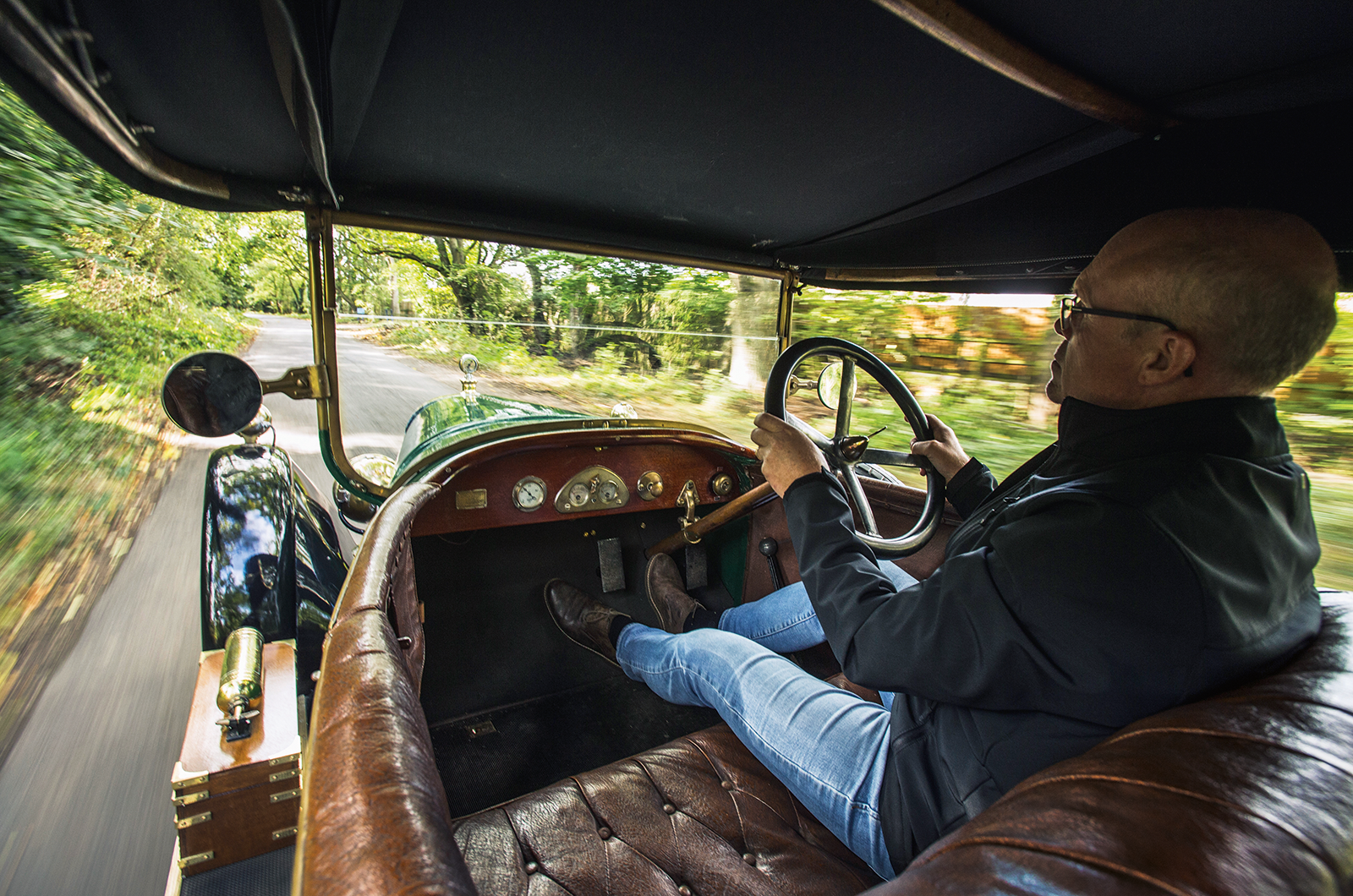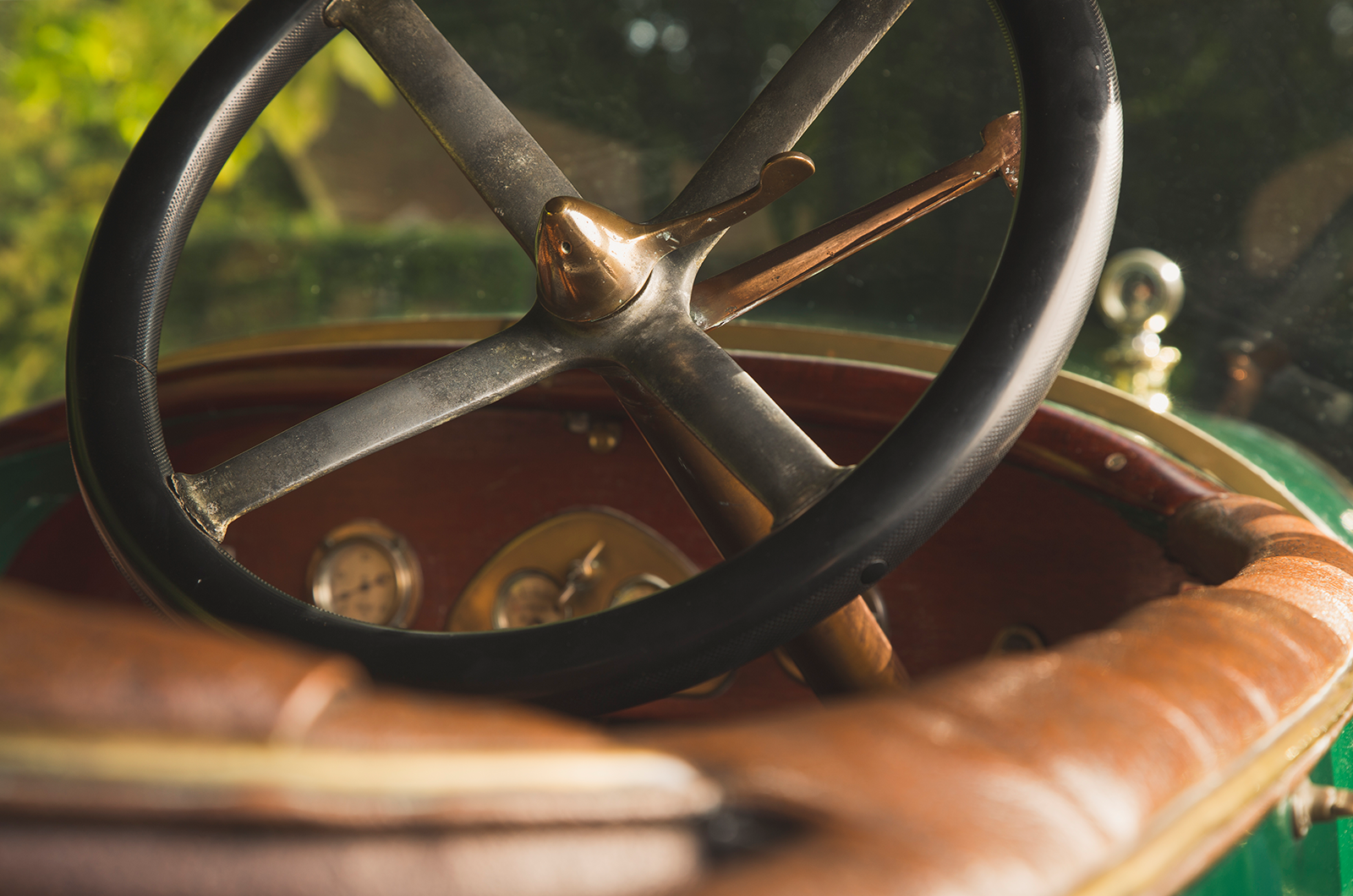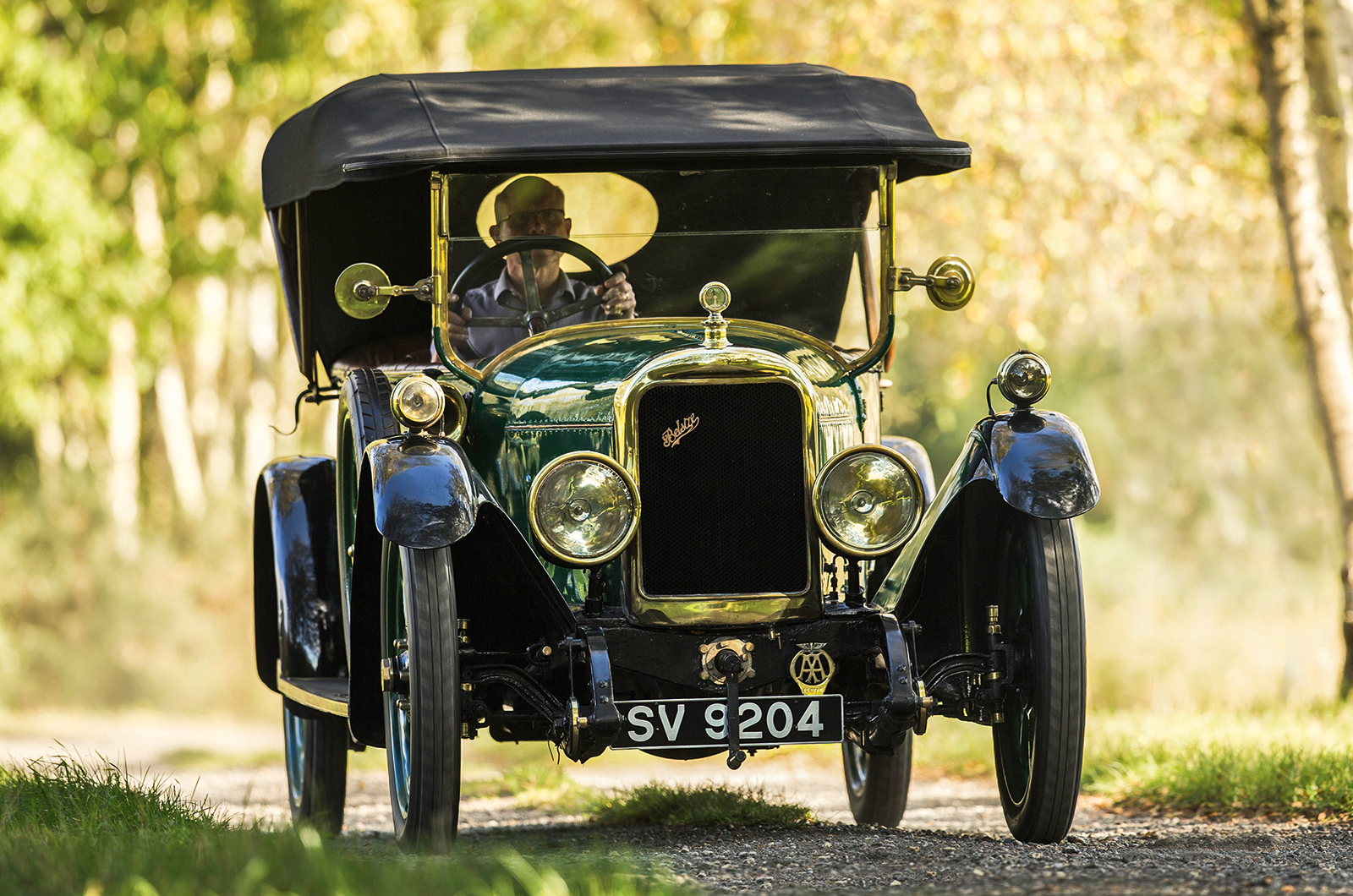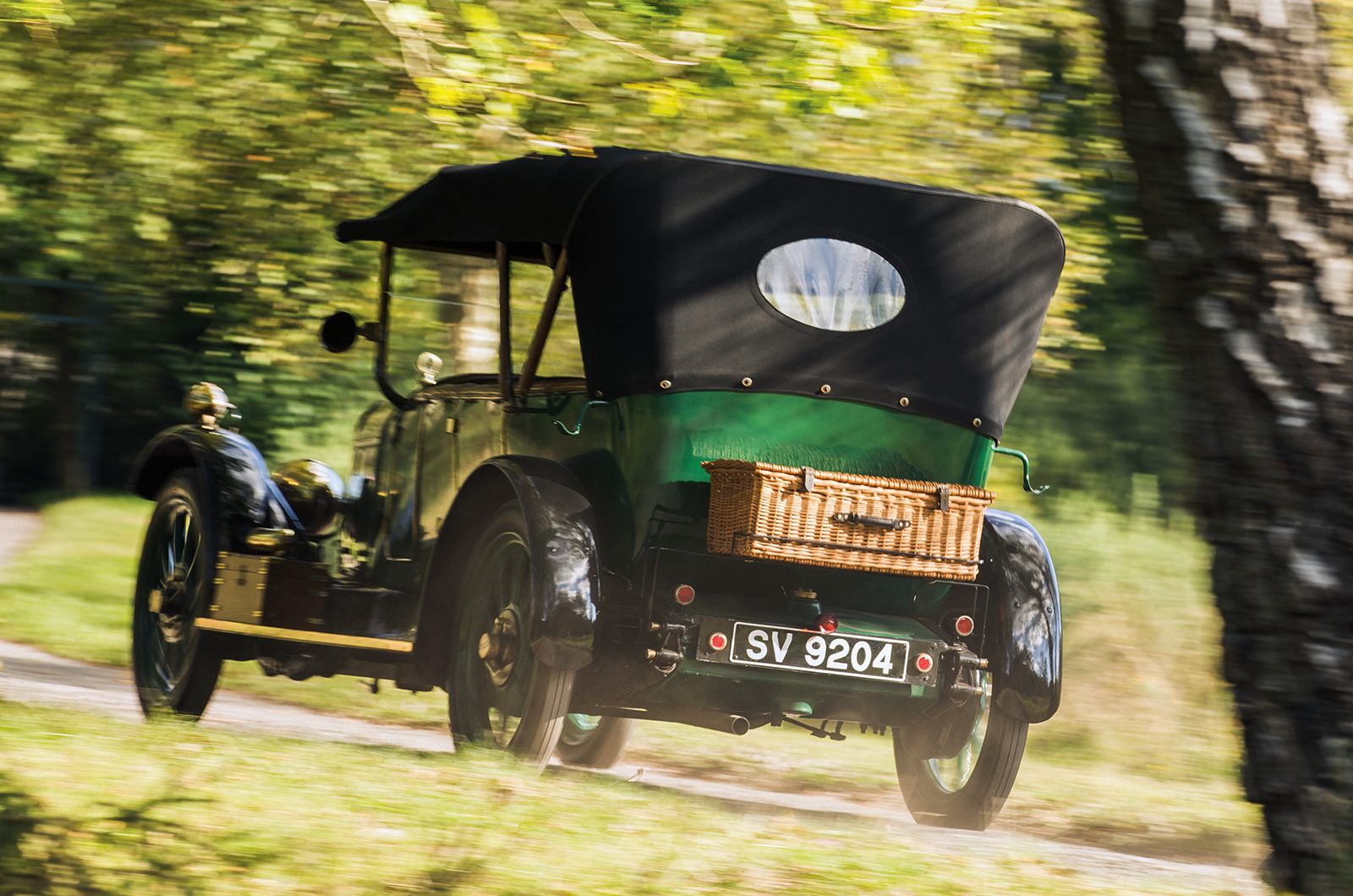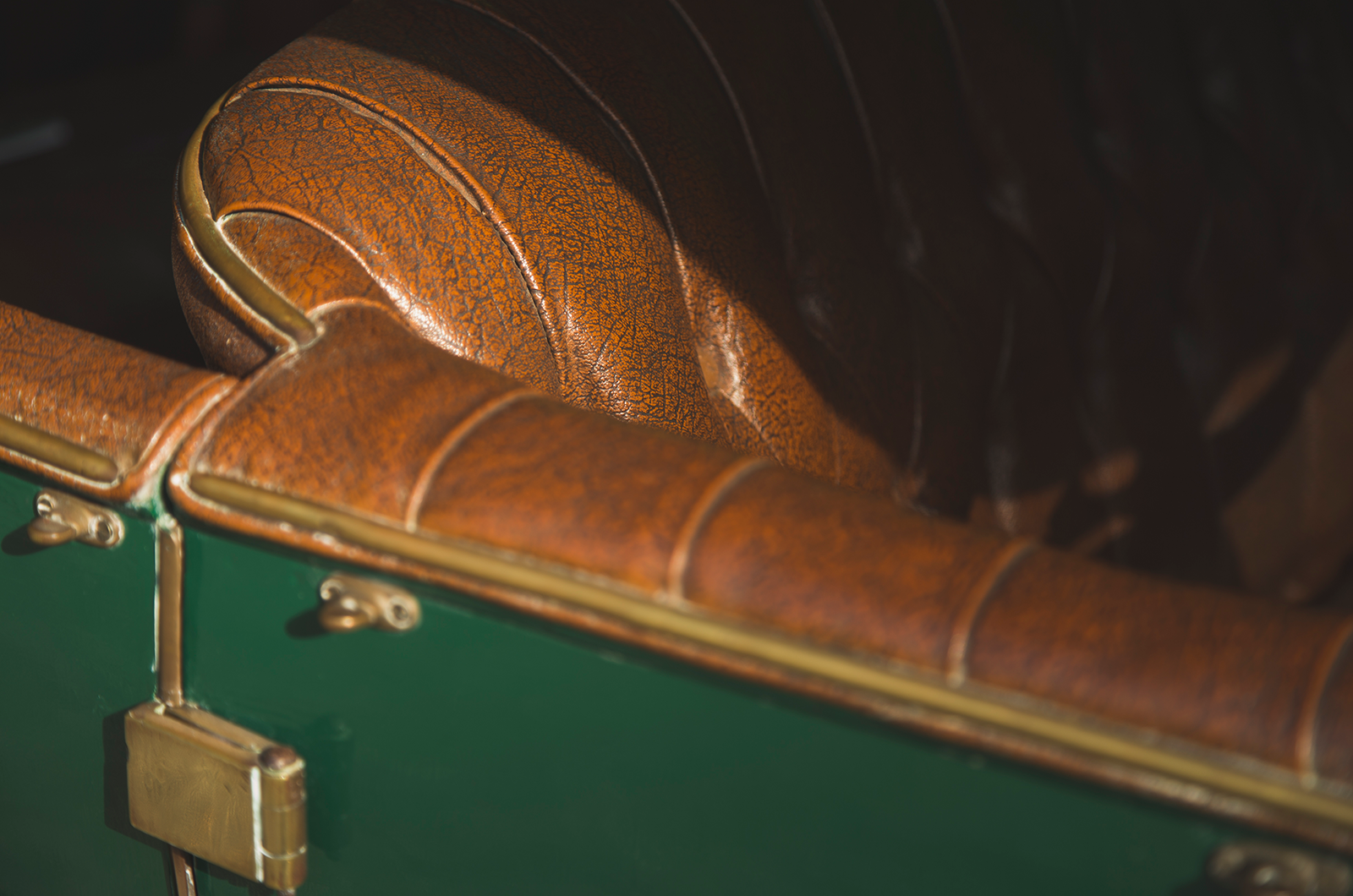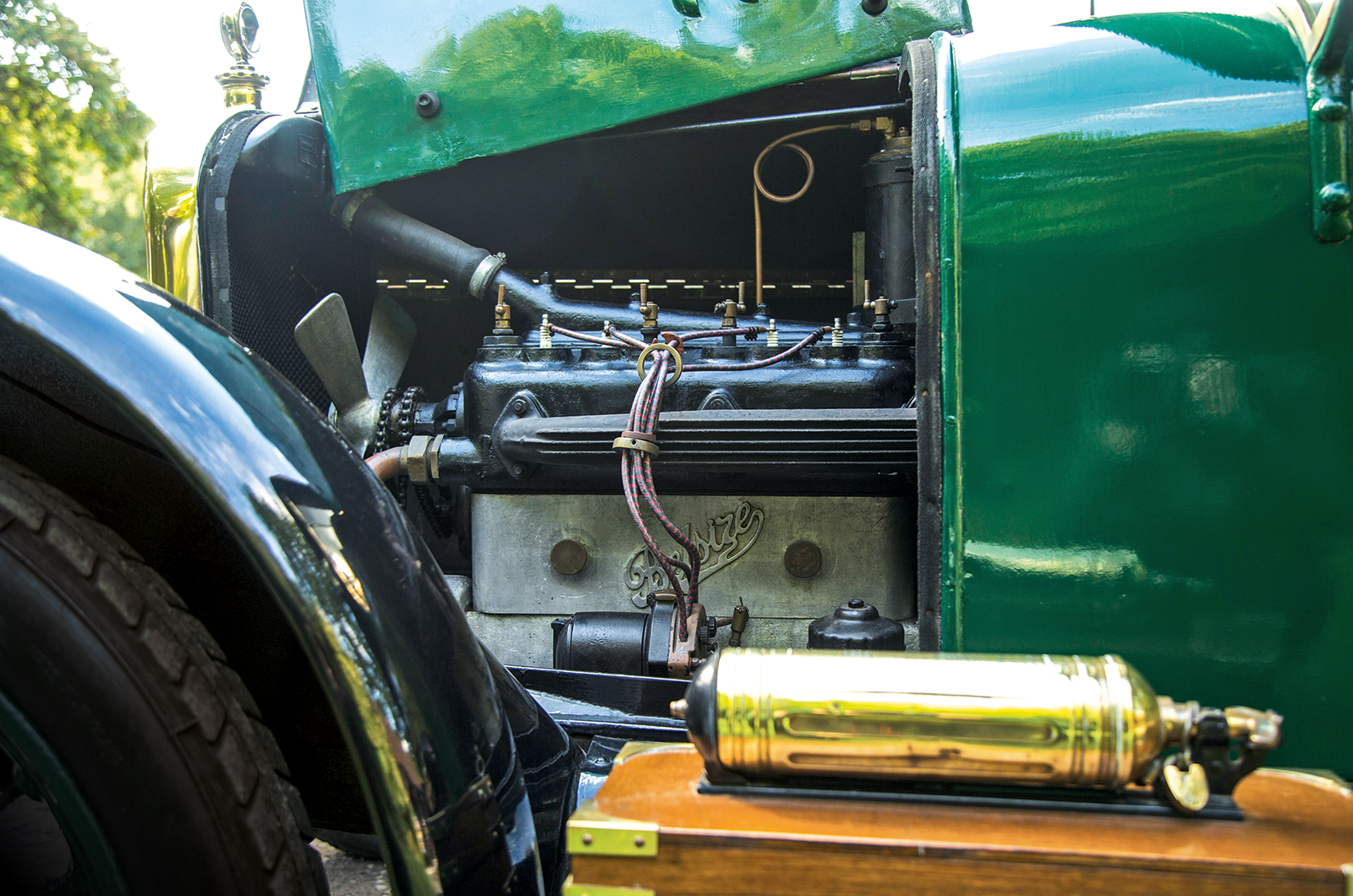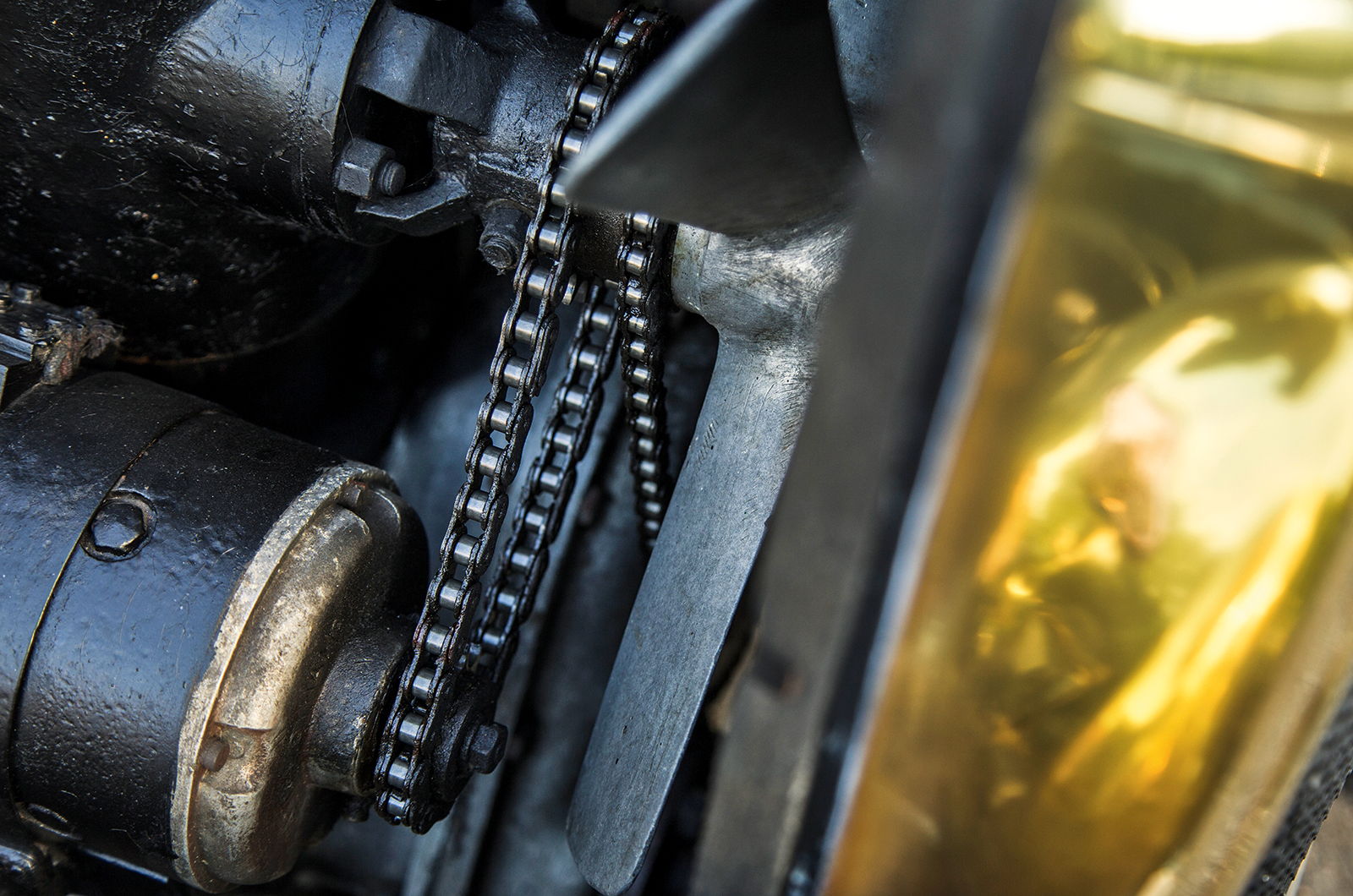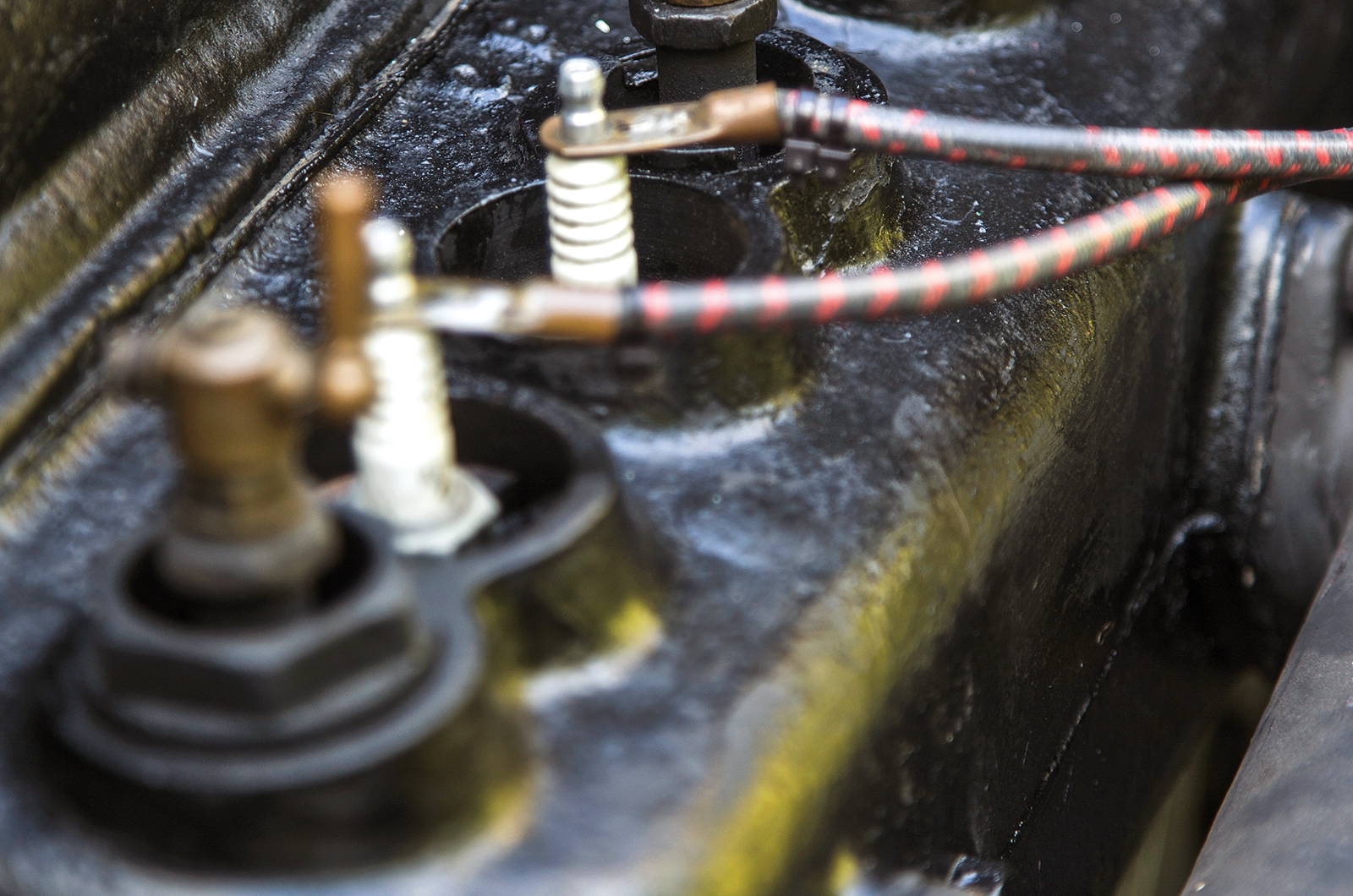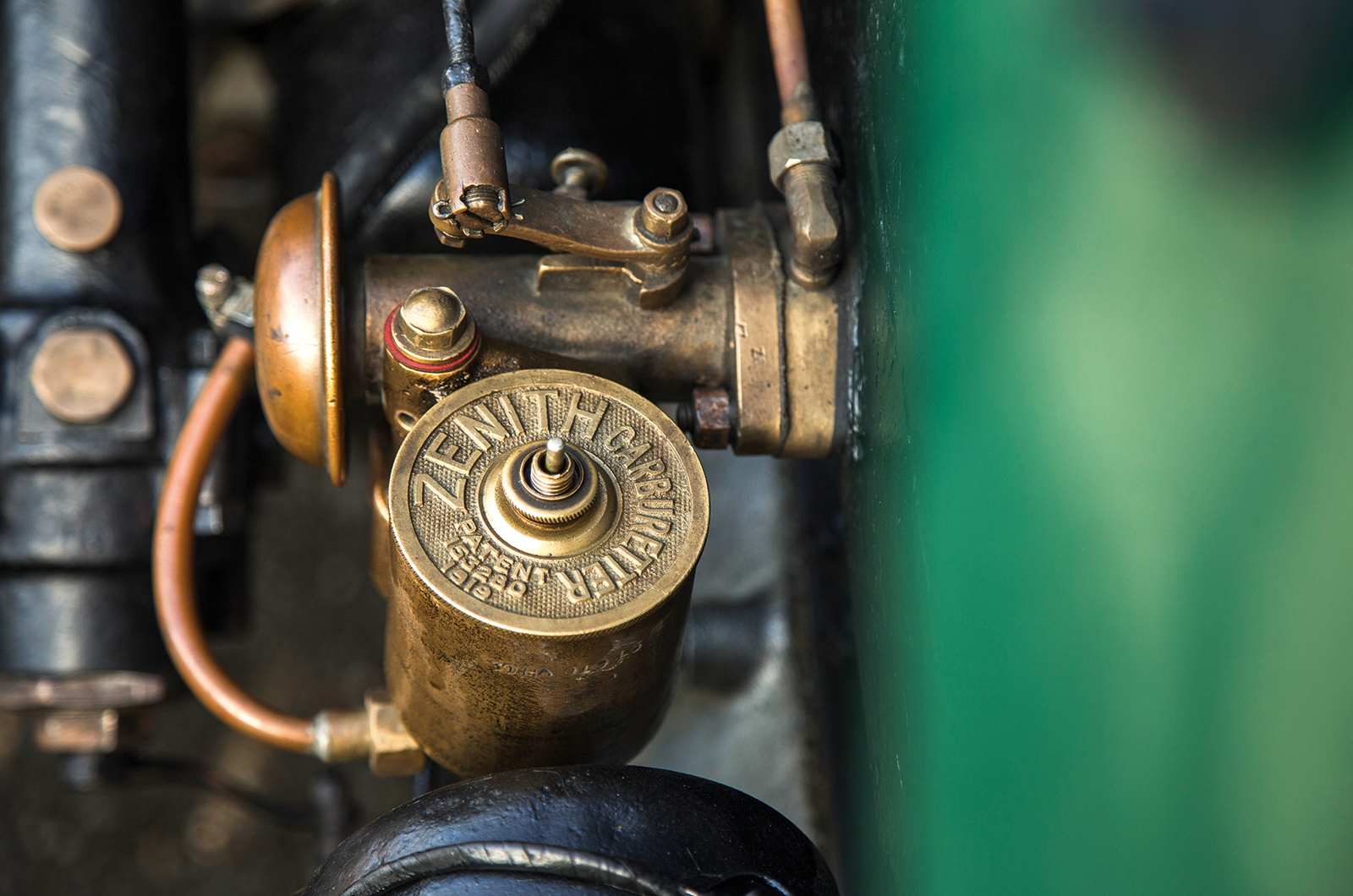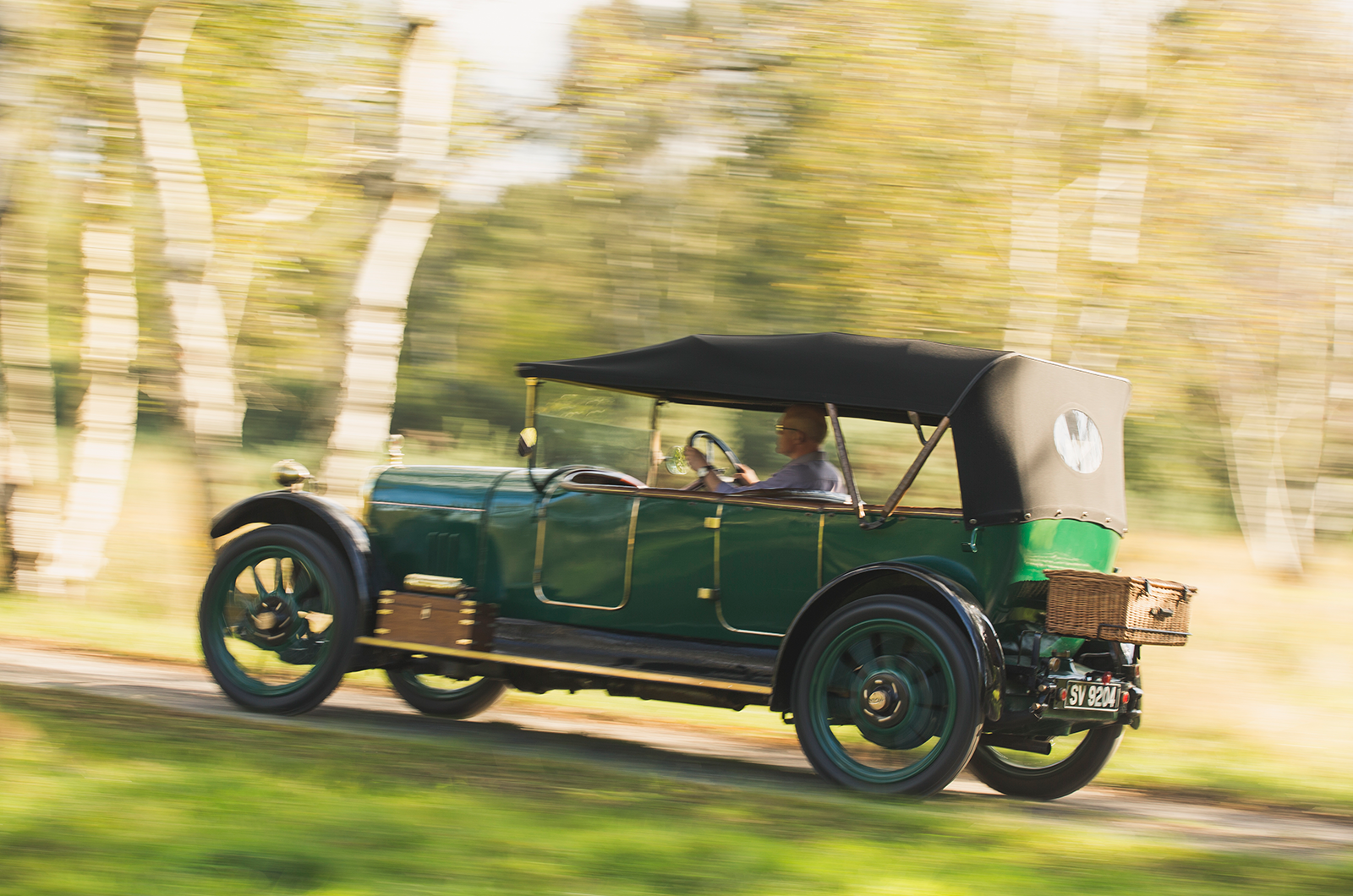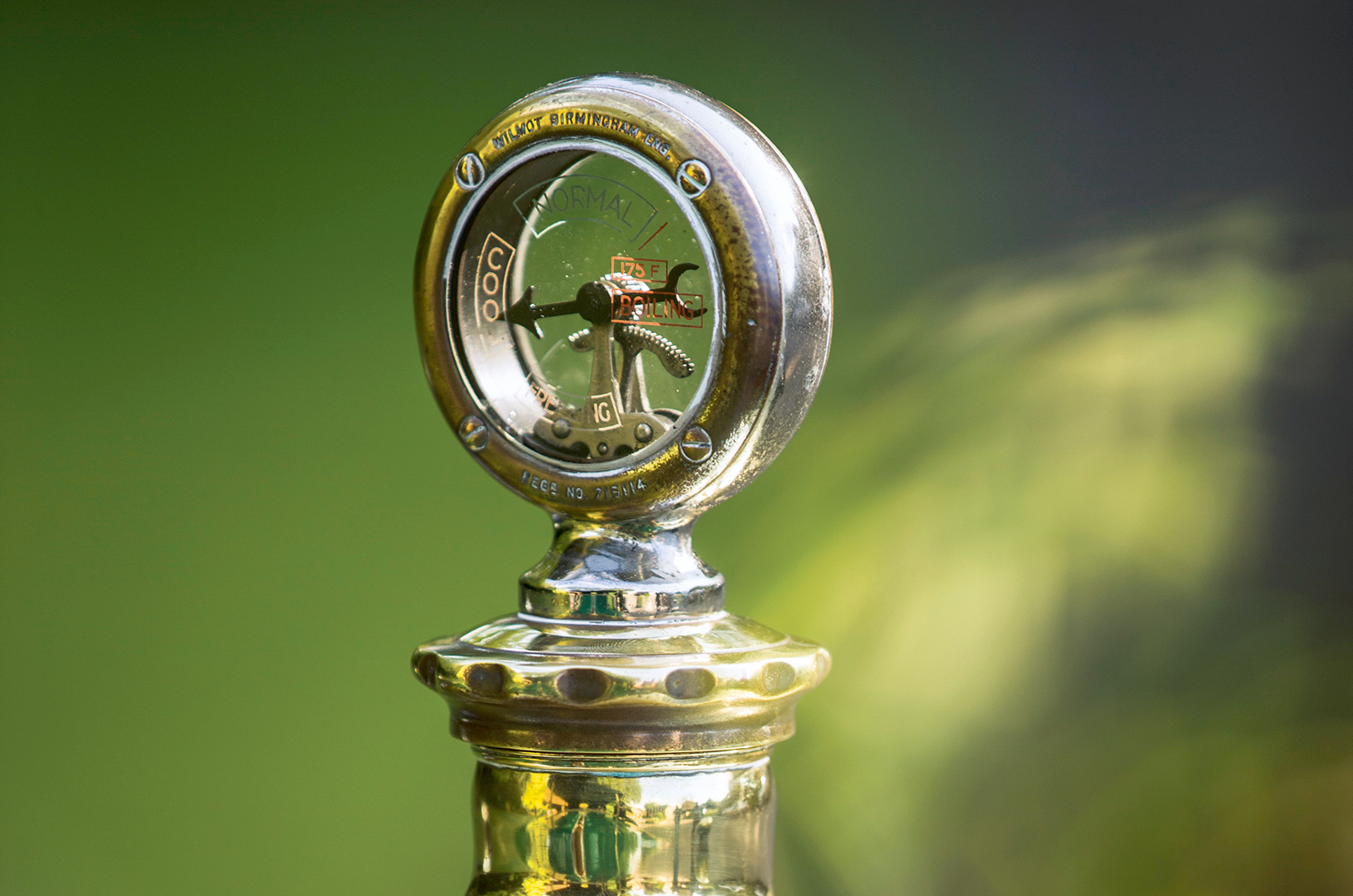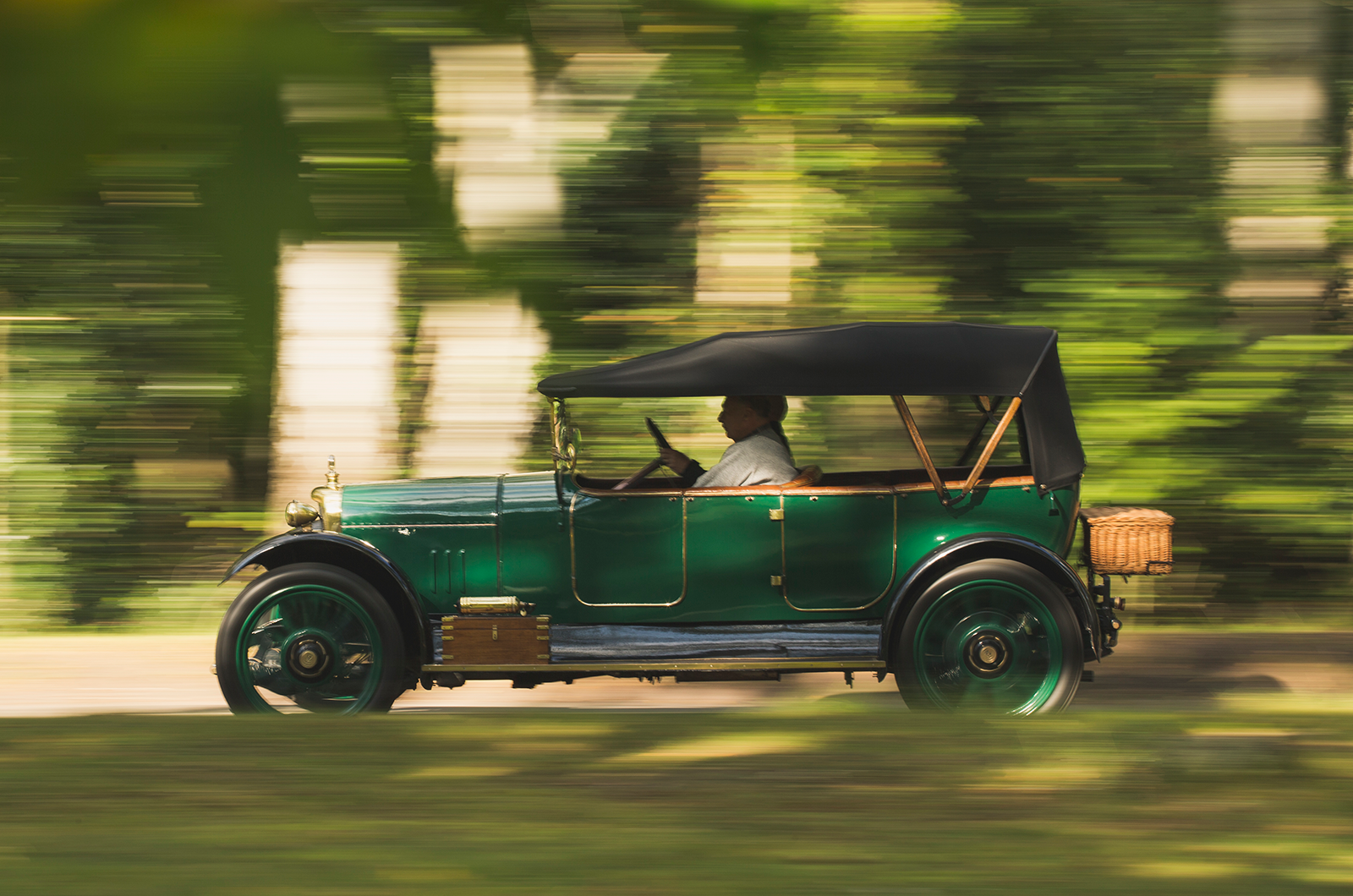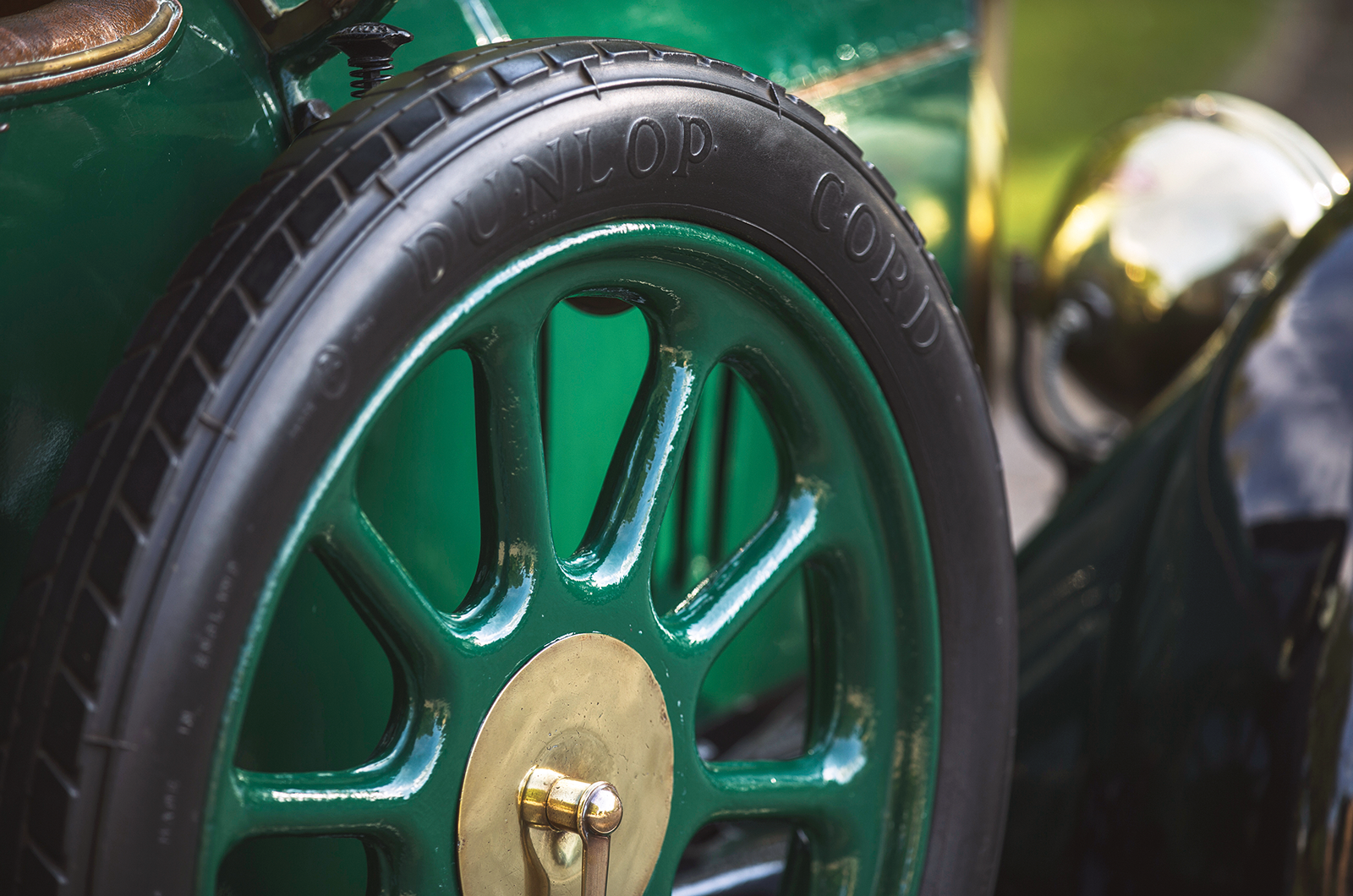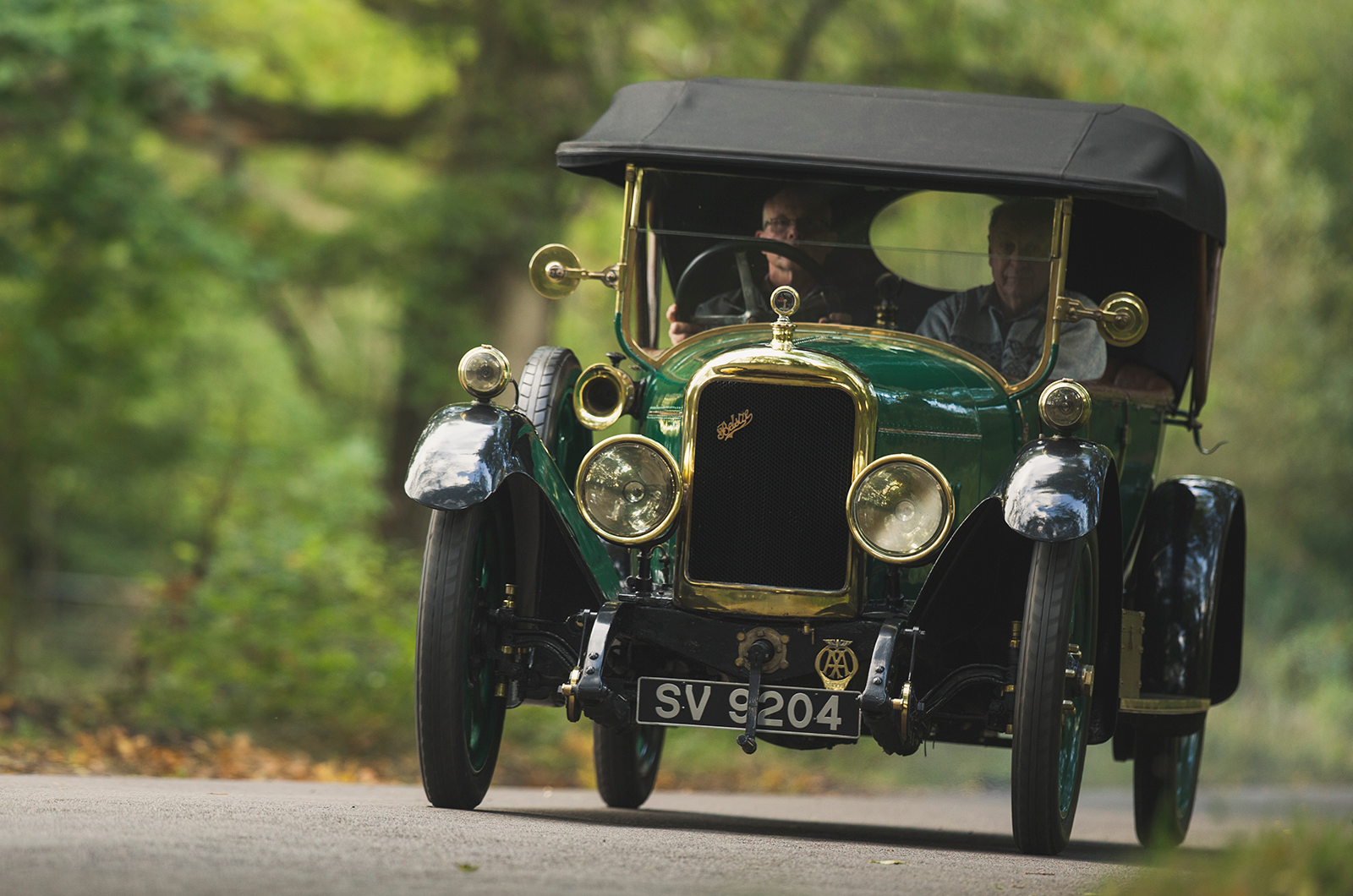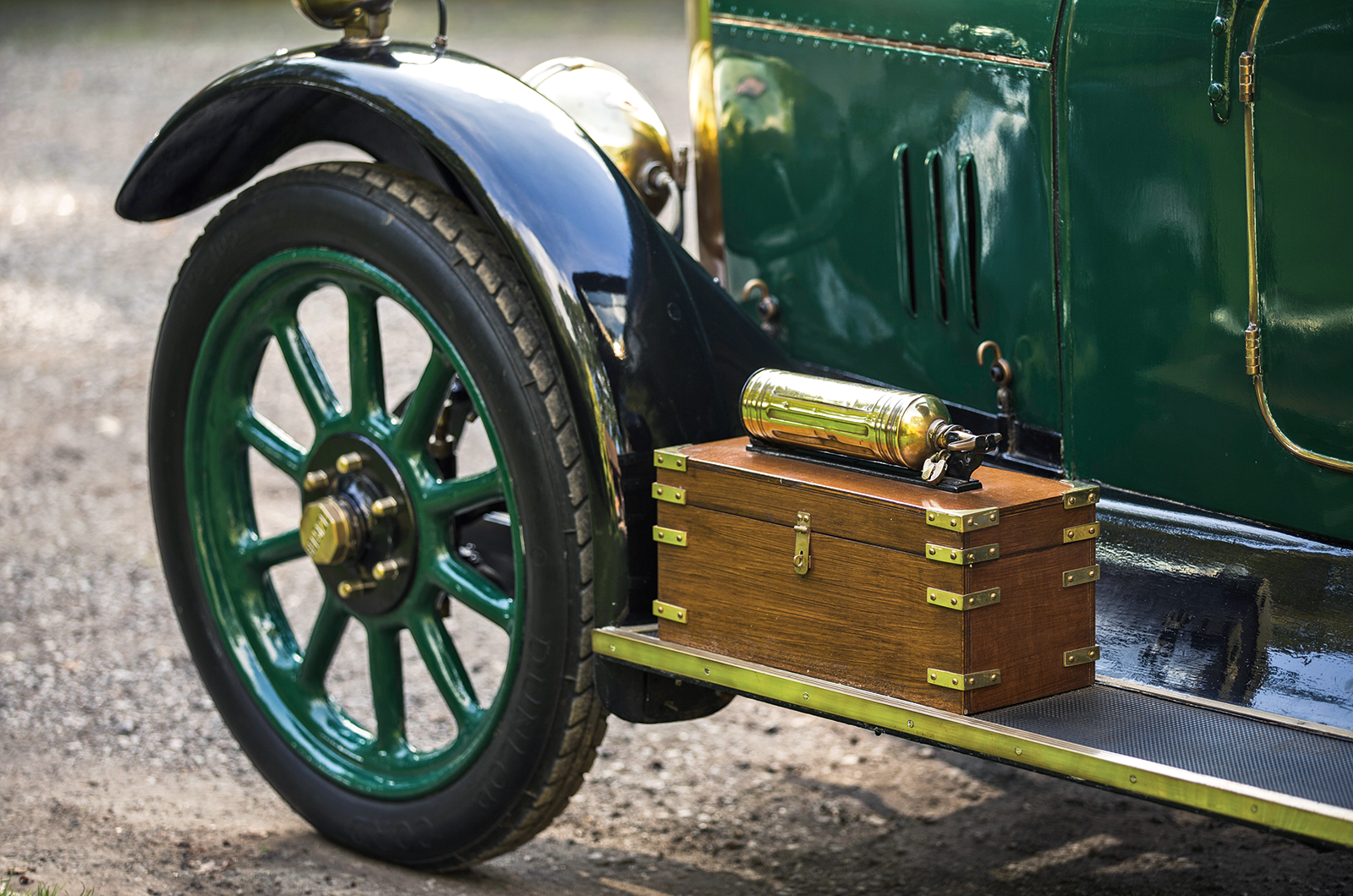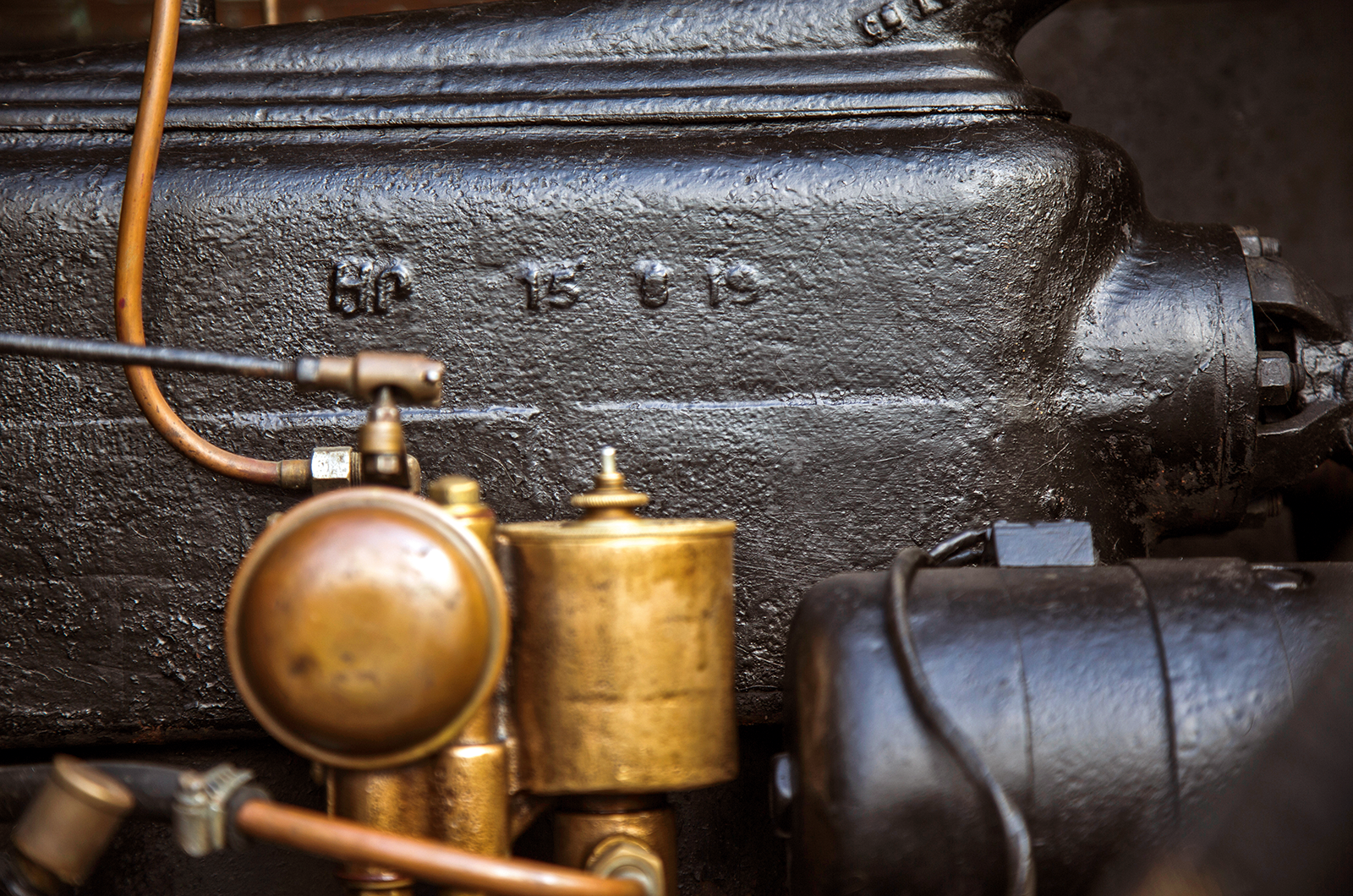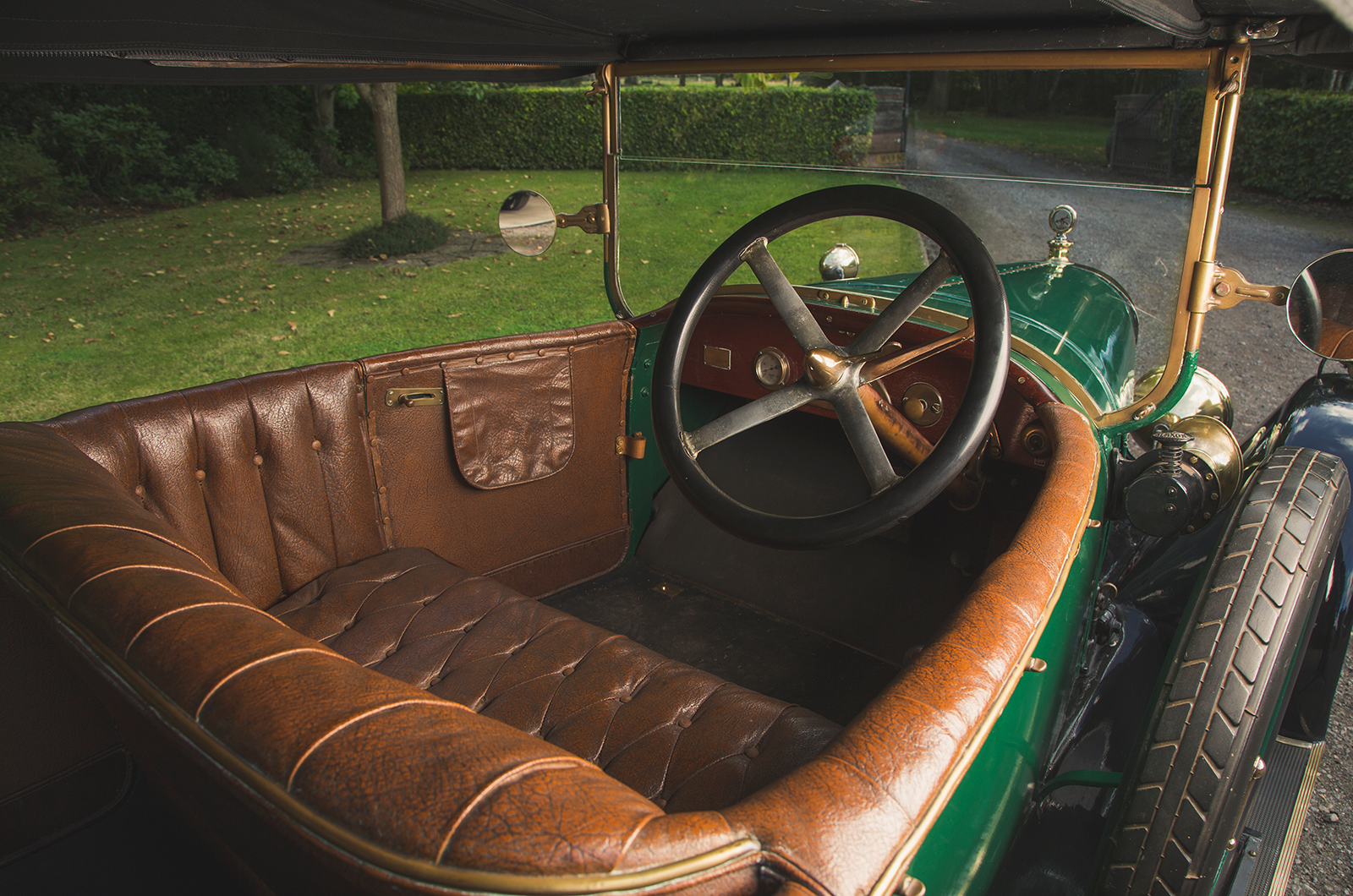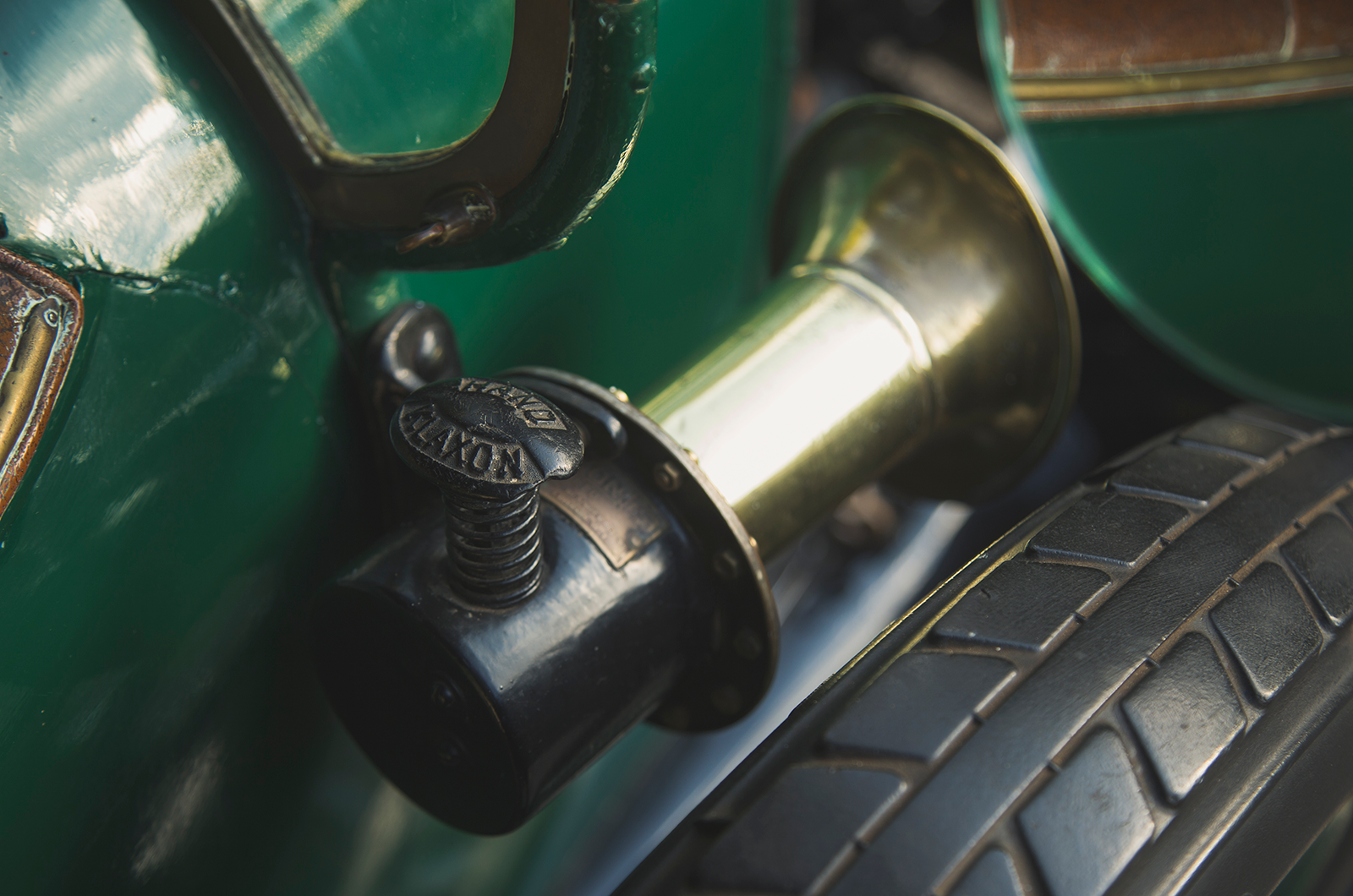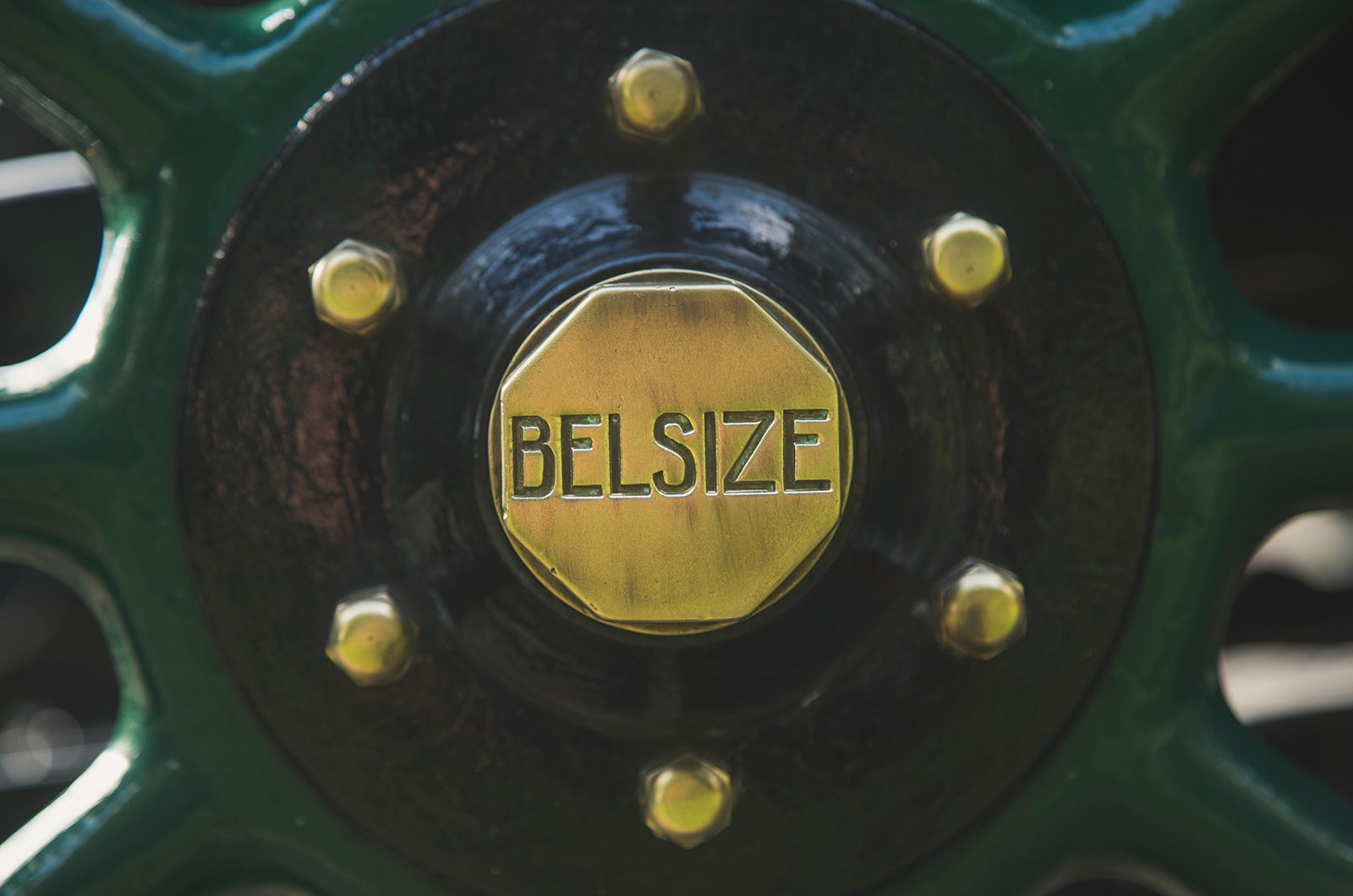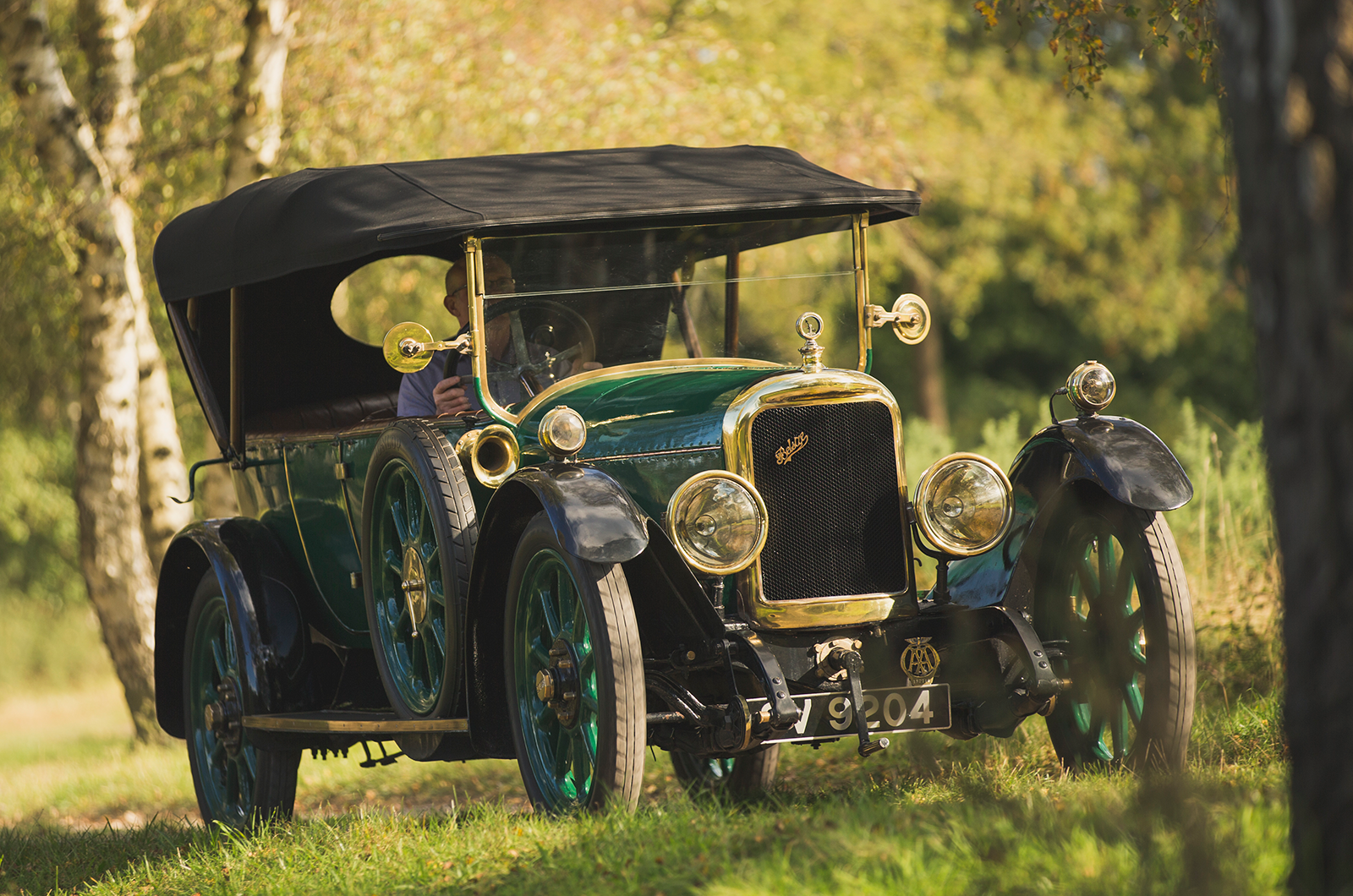The running boards were restored with solid brass surrounds and rubber facings, and a new toolbox was fitted.
The leaky fuel tank was repaired, and the closing surfaces of the bonnet were re-taped.
Inside, Price replaced the wiring behind the dashboard, the rubber flooring and damaged brass lifting rings.
He also found that the handling was rather skittish, so wisely fitted Hartford shock absorbers to the front axle.
The Belsize’s previously skittish handling was fixed with the addition of Hartford shock absorbers
A new hood and sidescreens completed what is now a lovely example of a late ‘brass-era’ motor car.
The starting process from cold is typical for many machines of this period: with the Autovac switch thrown, you ‘flood’ the Zenith carb, and prime cylinders one and two by turning the decompression levers and squirting a thimble of petrol into each.
Then it’s just a case of fully retarding the ignition using the lever on the steering wheel’s hub, flicking up the magneto switch and pressing the starter.
You sit well back from the dash behind a small four-spoke steering wheel, at the end of an unfeasibly long column.
The smart artillery wheels are original on the Belsize ‘15’
Just three dials grace the dashboard – for amps, volts and oil pressure – with an elegant water-temperature dial in a circular knurled brass frame facing you from outside the car, perched atop the radiator.
An open H-pattern gate for the four forward gears is positioned next to your right knee, with the handbrake lever to the right of that.
The clutch and brake pedals are mounted on either side of the steering column, with the mushroom-shaped accelerator between them, directly under it.
You’ll understand, then, that this is not a car for the large of foot.
‘On the gnarled rural roads of Surrey, you soon find the car’s natural gait’
Keeping in mind the Belsize’s cone clutch, you release it in one positive action, to avoid slipping; tricky, given how little travel it has.
Along with an equally short-travel throttle, and heavy steering at low speeds, it takes a few starts before you get the measure of it all.
Gears slot in easily, providing you change up early, but engaging each ratio requires a different technique: first to second goes straight in, but the rest need to be double-declutched.
The Belsize ‘15’ features brass running-board trim and a toolbox
Out on the gnarled rural roads of Surrey, you soon find the car’s natural gait.
Once you get through some natural play, the steering is quite high-geared, and it turns in keenly on its skinny Dunlop tyres, with a level of control that’s clearly improved by Price’s fitting of the Hartfords.
Thanks to a relatively long wheelbase, the Belsize also rides well over most surfaces, and its rear-only drums are dependable by the standards of a century-old car.
The misleadingly named Belsize ‘15’ had an RAC horsepower rating of 20.08hp
But this is no Sunbeam, Vauxhall or Austin – and it should have been.
The 2799cc ‘four’ creates its own version of Bentley’s ‘bloody thump’, but with no corresponding urge from low down.
Overall, the Belsize’s engine is not even comparable with smaller, more refined and (at the time) tax-efficient offerings from key rivals.
Tim Price reupholstered the Belsize’s buttoned leather seats and rewired the dashboard
It has ‘character’ today – and I enjoyed every minute of my day spent with it – but you do wonder how contemporary motorists would have viewed the Belsize ‘15’.
In 1923, the model was refreshed with an overhead-valve engine of a larger 3079cc displacement, but it was undoubtedly too little, too late to save the Belsize Motor Company.
In June of that year a report commissioned by its receivers said: ‘There appeared to be a lack of purpose and all seemed to have lost heart in the undertaking.’
The scarcity of spare parts has been challenging during Tim Price’s ownership of the Belsize ‘15’
By 1925, Belsize was no more.
Flawed though this rare survivor is, it represents the final chapter of a once-great company, of which so little seems to be remembered today.
To me, that makes it valuable way beyond any monetary worth.
Images: Luc Lacey
Thanks to: Emma Burgham at the Science and Industry Museum, Manchester; Sophie Richardson at Cheffins; Joshua Butt, for his thesis ‘Aspects of the automobile’s diffusion in the North-West of England 1896-1939’
What’s in a name?
In a period when most manufacturers expressed their products’ model names with an RAC horsepower rating (which determined the tax band), followed by the actual power of the engine, it’s a mystery why Belsize referred to the ‘15’ (and later ‘15/20’ evolution) thus, when it clearly stated that its 90 x 110mm cylinder dimensions correctly equalled an ‘RAC rating, 20.08.’
No reference was ever made to the engine’s real output, but even if the number sequence were reversed, 15hp is clearly well below what any self-respecting 2.8- or 3-litre motor would have made in the day.
A mystery indeed…
Factfiles
Belsize ‘15’
- Sold/number built 1919-’23/n/a
- Construction pressed-steel chassis, ash body frame with aluminium panels
- Engine all-iron, monobloc 2799cc ‘four’, with Autovac-fed Zenith carburettor
- Max power 20.08hp (RAC rating)
- Max torque n/a
- Transmission four-speed manual, RWD
- Suspension semi-elliptic springs f/r
- Steering worm and sector
- Brakes rear drums
- Length 13ft 6in (4115mm)
- Width 5ft 6in (1676mm)
- Height n/a
- Wheelbase 9ft 8in (2946mm)
- Weight n/a
- 0-60mph n/a
- Top speed 55mph (est)
- Mpg 22-24 (est)
- Price new £540
- Price now £25-30,000*
*Prices correct at date of original publication
READ MORE
On the up: Vauxhall 14hp M-type vs Sunbeam Fourteen
Citroën B12 taxi: my fare landaulet
Sevens’ haven: meet the surprise Austin Seven collector
Simon Hucknall
Simon Hucknall is a senior contributor to Classic & Sports Car
